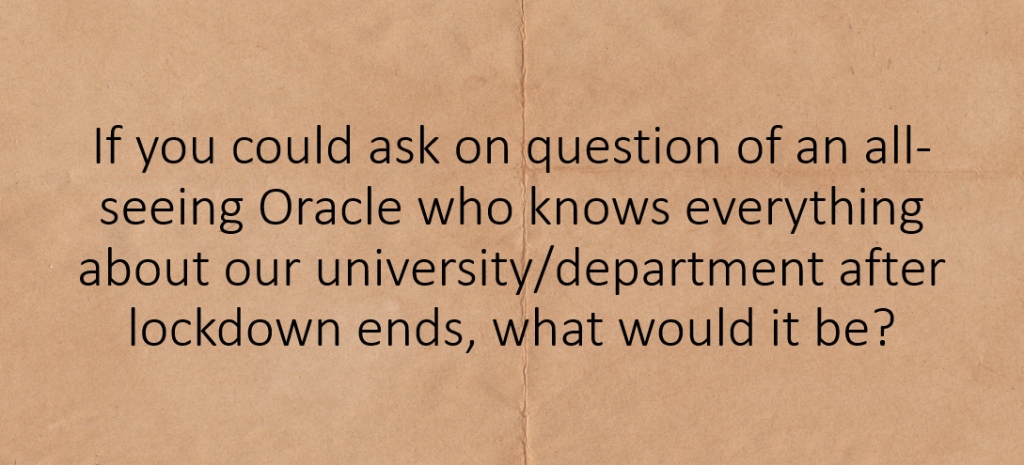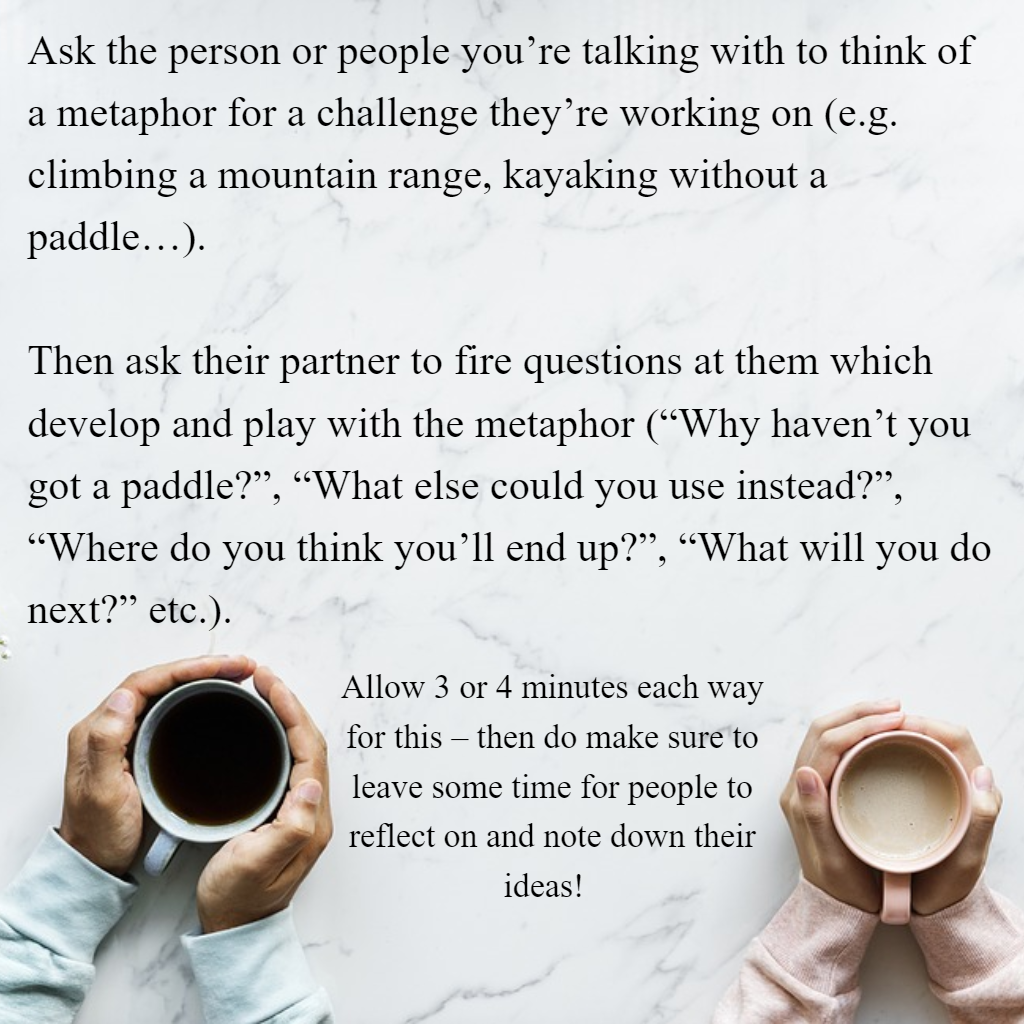Meetings are an essential part of working life. They often form the framework to our week and are the cornerstones to our days. So how do you balance getting work done with the myriads of meetings filling your diary?
Here are five techniques to help make your meetings more productive, purposeful and maybe even fun.
Note from the author to the reader: I’ve already had more meetings in my life than I can count, even though I’d say I’m still in the (relatively) early years of my career. And the meetings that stick in my mind aren’t the ones with the big breakthroughs. Instead they’re the ones that really challenged me to think hard, where the scene was set for some innovative, thought-provoking ideas that all started with a good question.
Right now, when we’re probably having more meetings online than we would’ve had if we were meeting face to face, so how do you keep the energy and inspiration to keep these productive and purposeful?
Here, we bring back five techniques from the Invisible Grail toolbox to help you find just the right question to inspire a little fun and creativity. For next time you meet on Zoom or Microsoft Teams, try one on of these.
Meetings should be a chance to connect with people, an opportunity to maximise the potential from the different voices in the room.”
It shouldn’t be. An oxymoron that is. Meetings should be a chance to connect with people, an opportunity to maximise the potential from the different voices in the room.
Led well, they can elicit new ideas and approaches. They are also a handy way to distribute leadership, responsibility and trust amongst colleagues, and in a world where we often hunker down on our individual to-do lists, they encourage us to reconnect with others.
However, it’s not uncommon to think of meetings as gaping wounds in our diaries stuffed with other people’s agendas. For all their potential, they can gobble up time more efficiently than a black hole.
And time’s not the only victim of meetings. Without meaning to, they can fall foul of dominant viewpoints and personalities; a convenient soapbox for the loudest to shout from. This is especially true of online meetings, where you may find yourself waiting for your turn to speak, making the experience both exasperating and irritating.
So how do you avoid the black hole/soap box syndrome that so many meetings suffer from?
A lot of it is in the planning and careful deployment of the bits that wrap around the main point of the meeting and which, when executed well, help bring people on side and galvanise them to action.
What is essential before, during and after is to communicate why this meeting is important, and to encouraging people to see their place in it: in essence, to use the power of narrative and purpose in bringing people to the room in mind and spirit.
So here are five techniques drawn from the Invisible Grail toolbox to help make your meetings more productive, purposeful, and maybe even fun.
Recognising all the voices in the room
There’s no point in inviting people to a meeting if they don’t have an opportunity to contribute in some way. And without seeking people’s input you risk missing potentially interesting ideas or new ways to look at the challenge you are trying to unpick. However, it can be difficult to open up the conversation and encourage everyone, including those who are less inclined to speak, to contribute with confidence.
To recognise the voices in the room, and to start a meeting off on a positive footing, invite people to introduce themselves, and to consider this question:

Their strengths needn’t be skills-based, or dependant on their knowledge of the matter at hand. Rather, this question encourages people to take ownership of what only they can offer to make the meeting productive, and brings a level of authenticity to the contributions they make thereafter.
You don’t have to start with this question either. A question that is relevant, thoughtful and connects to the people in the room, virtual or otherwise, will work just as well.
Meetings to think outside of the box
We’re often creatures that like the path of least resistance best. Especially when we have pressing concerns, or things to do, innovation and ideas are the first things to go out the window. Yet meetings can be an excellent opportunity to play with out-of-the-box ideas about what it could look like to question and challenge the way things are or should be done.
Here’s a 10-minute activity to generate new ideas for the future direction of a project, department or organisation. Ask each member of the group to think individually of a response to the following question:
Listen to each of the responses in turn, without passing judgement, until everyone has spoken. Note the range of ideas put forward, which are likely to include quantifiable measures of performance, imaginative visions and reflections of people’s values.
Next, ask everyone to think of what they would ask if they had a second question. After hearing what everyone says, it might be worth reflecting on the differences between the two rounds of responses.
This technique also encourages people to listen to one another, and evens the playing field between professional levels, skills and expertise.
Overcome perceived and real blockers
If your meetings are about getting from A to B on a particular project, it can be easy to focus on the hurdles rather than the finishing line. Overcoming these perceived and real blockers is challenging, not only in practical terms but in maintaining the energy and motivation of the people tasked with seeing it through.
This technique comes tried and tested from the Invisible Grail team. Through a sequence of open questions, it will enable you to shed new light on a project and unlock new ways to approach whatever shape, size and challenge your particular set of hurdles takes.
This technique is best used in pairs, and to be time efficient, ask people to come prepared with a metaphor.
Be open to feedback
Feedback can be tricky. It requires openness and trust on the part of both giver and receiver. Yet feedback is essential to avoid becoming complacent; it challenges us to stretch ourselves out of our comfort zone and to acknowledge the views of others.
To make your meetings more productive, feedback on how the meeting has gone can help you refine your approach and make the next one even better.
So at the end of your next meeting, encourage people to think of one thing that they would find helpful for you to Stop, Start and Continue for future meetings. In person, you can invite people to write these on a post it note and stick it to the door as they leave, and online you can ask people to leave this on Padlet (a virtual corkboard).
What they write should be helpful advice for you to put changes into place. Consider their responses – some you may have expected, others not, and of these some may be helpful. The next time you get together report back and, where you need to and it’s feasible, act on the feedback given.
Be brave, try fearless feedback
As Keith Grint and others have emphasised, questions which stimulate insight are key to a leader’s capability set. In the context of a meeting, feedback will help you evolve from one meeting to the next whilst nurturing a culture of openness.
Try using this question with people after your next meeting:
This might be a question you use every now and again. Not only does it show your appetite to grow, but leading by example it’ll help set the tone of a growth mindset of the people you work with and lead too.
Each meeting will, of course, be different to the next. And the focus from one meeting to the next may also shift. These techniques can be used when you need them, or as a longer-term process of changing and adapting meeting behaviours. However you choose to use them, what is essential is to find ways to unlock people’s trust and respect in one another, and to build confidence and energy for leading meetings too. By doing this, not only will your meetings become more productive and purposeful, they won’t feel like black holes anymore.
As a team we commit to using these techniques and others like these in our own meetings to challenge our default approaches and create opportunities to improve how we work. We also share these techniques, and further creative ideas, through our monthly e-newsletter, Elixir. If you would like to sign up to our mailing list please click here, or email Louise.




